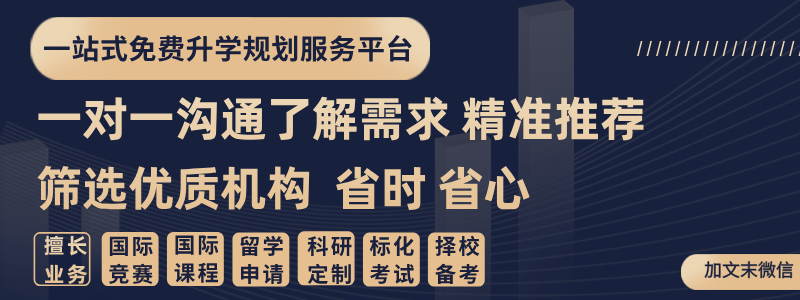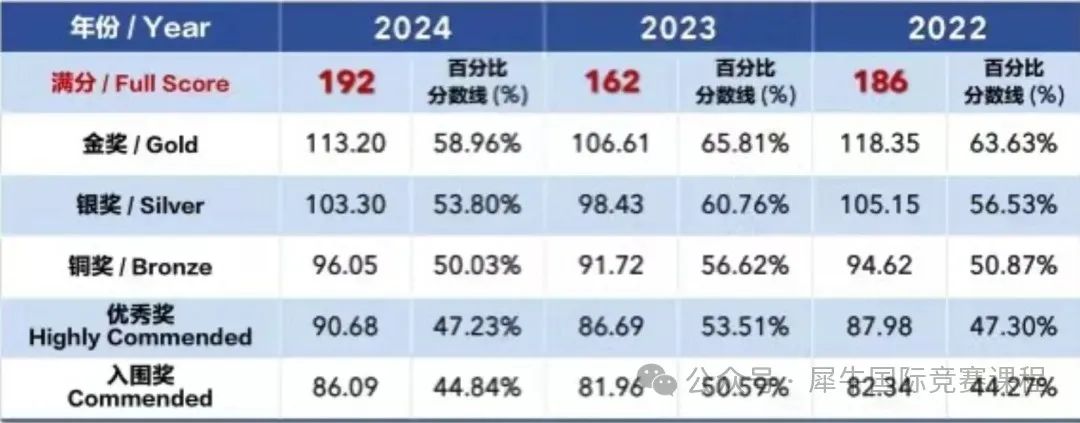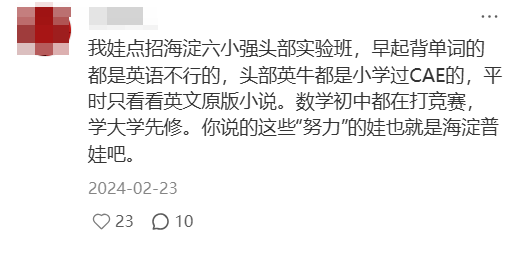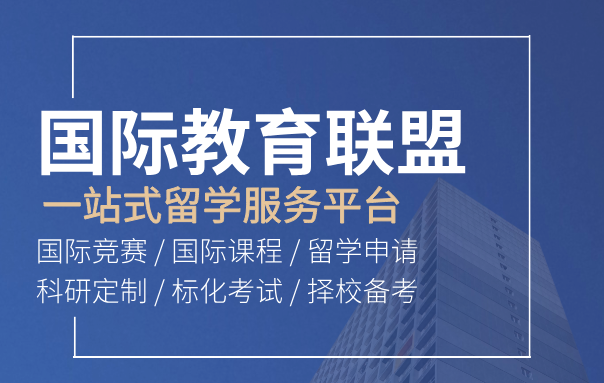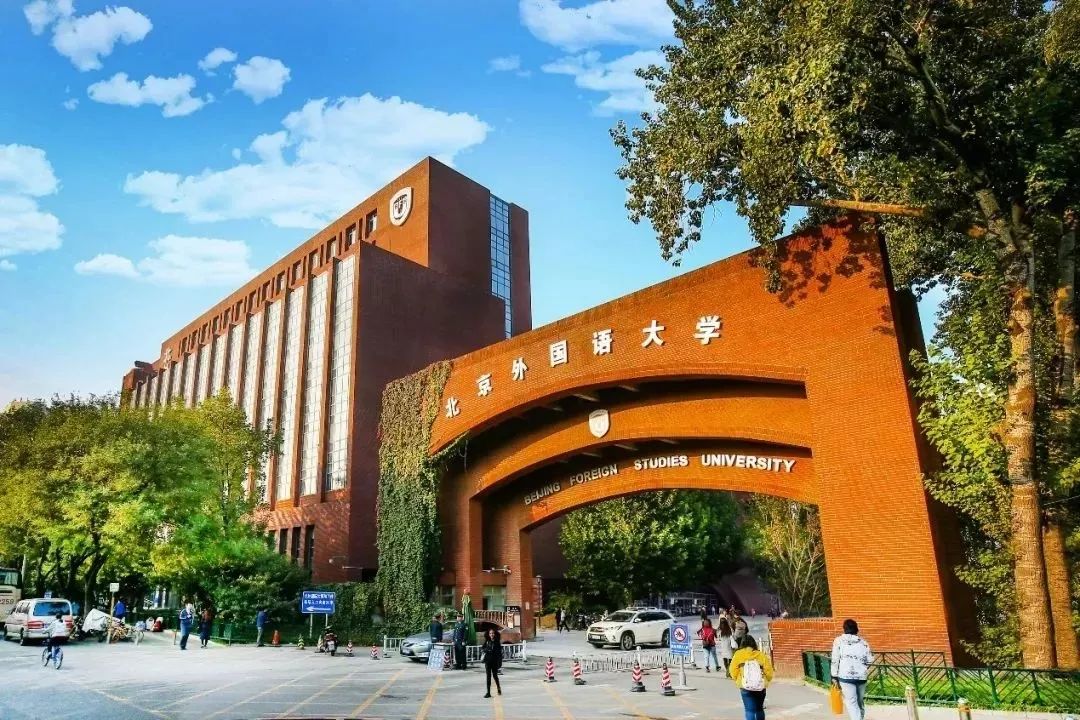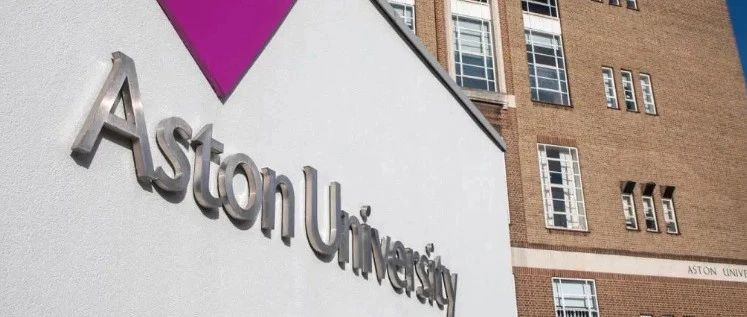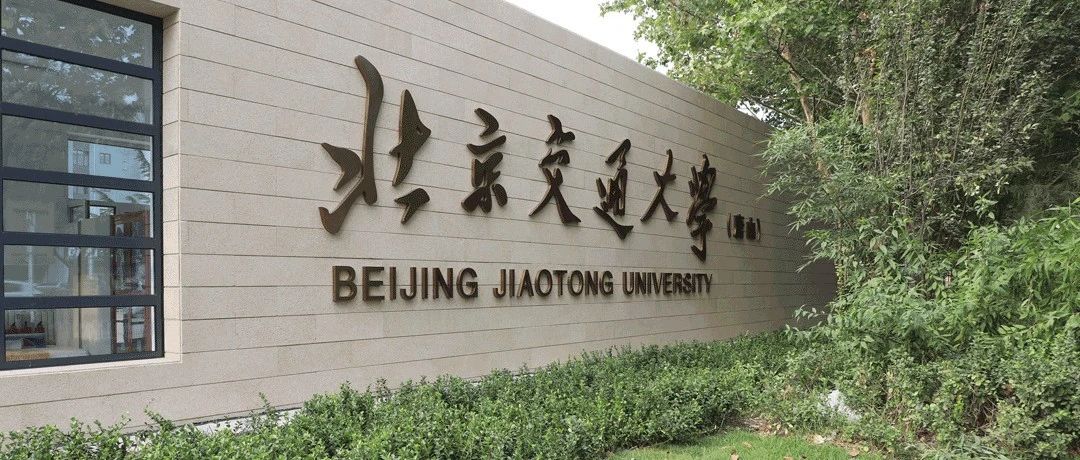4月23日托福考试落下帷幕考情速递也已经出炉了!
写作超多原题重现!听力部分同学感觉语速有点快
同学们觉得这次考得如何?
期待备考同学们都能顺利上岸!
阅读
R 1
1.冰川二氧化碳量的变化
2. Early Photography in the United States
P1:介绍了1839年达盖尔银版照相术(daguerreotype)的诞生及其影响。摄影因其能“真实反映自然”而受到赞誉,并迅速催生了一系列专利和技术创新。在农村,流动艺术家和工匠(如铁匠、鞋匠)开始从事摄影,挨家挨户销售质量参差不齐的银版照片;而在城市,摄影师则以专业形象吸引高端客户,并开设店铺,最终形成“银版照相工厂”,提供标准化服务。
P2:对比达盖尔银版照相术和湿版照相术(wet-plate photography)的区别。湿版技术可批量冲印,满足了大众对亲友照片的需求。同时,摄影还缓解了维多利亚时代的社会焦虑——城市化进程中,人们难以判断陌生人动机,而摄影通过“捕捉人物内在性格”的宣称,提供了一种信任工具。
P3:进一步探讨摄影的社会功能。文化历史学家指出,1860年前美国城市经历“社会信任危机”,摄影师通过标准化姿势和表情,让观众相信能“从外表看透内在”,从而缓解中产阶级对现代化的不安。摄影与风俗画(genre painting)类似,都通过熟悉的形象帮助人们适应日常生活。
P4:以马修·布雷迪(Mathew Brady)的摄影画廊为例,说明摄影的“真实性”如何吸引公众。布雷迪通过拍摄名人肖像并公开展览,将其视为“公共历史记录”,同时利用出版和杂志推广,吸引人们前来“从肖像中学习伟人品质”。
P5:补充布雷迪画廊的细节,强调其商业与公益双重性质。观众通过研究名人肖像,试图发现其“伟大源泉”,并以此为榜样自我激励。
P6:可能总结摄影的文化意义,或进一步讨论其他案例(如布雷迪的南北战争摄影)。
R 2
1.Root Fungi, Mycorrhizae
2. The Origins of Writing
It was in Egypt and Mesopotamia (modern-day Iraq) that civilization arose, and it is there that we find the earliest examples of that key feature of civilization, writing. These examples, in the form of inscribed clay tablets that date to shortly before 3000 B.C.E., have been discovered among the archaeological remains of the Sumerians, a gifted people settled in southern Mesopotamia.
The Egyptians were not far behind in developing writing, but we cannot follow the history of their writing in detail because they used a perishable writing material. In ancient times the banks of the Nile were lined with papyrus plants, and from the papyrus reeds the Egyptians made a form of paper; it was excellent in quality but, like any paper, fragile. Mesopotamia’s rivers boasted no such useful reeds, but its land did provide good clay, and as a consequence the clay tablet became the standard material. Though clumsy and bulky it has a virtue dear to archaeologists: it is durable. Fire, for example, which is death to papyrus paper or other writing materials such as leather and wood, simply bakes it hard, thereby making it even more durable. So when a conqueror set a Mesopotamian palace ablaze, he helped ensure the survival of any clay tablets in it. Clay, moreover, is cheap, and forming it into tablets is easy, factors that helped the clay tablet become the preferred writing material not only throughout Mesopotamia but far outside it as well, in Syria, Asia Minor, Persia, and even for a while in Crete and Greece. Excavators have unearthed clay tablets in all these lands. In the Near East they remained in use for more than two and a half millennia, and in certain areas they lasted down to the beginning of the common era until finally yielding, once and for all, to more conv enient alternatives.
The Sumerians perfected a style of writing suited to clay. This script consists of simple shapes, basically just wedge shapes and lines that could easily be incised in soft clay with a reed or wooden stylus; scholars have dubbed it cuneiform from the wedge-shaped marks (cunei in Latin) that are its hallmark Although the ingredients are merely wedges and lines, there are hundreds of combinations of these basic forms that stand for different sounds or words. Learning these complex signs required long training and much practice; inevitably, literacy was largely limited to a small professional class, the scribes.
The Akkadians conquered the Sumerians around the middle of the third millennium B.C.E., and they took over the various cuneiform signs used for writing Sumerian and gave them sound and word values that fit their own language.
■ The Babylonians and Assyrians did the same, and so did peoples in Syria and Asia Minor.
■ The literature of the Sumerians was treasured throughout the Near East, and long after Sumerian ceased to be spoken, the Babylonians and Assyrians and others kept it alive as a literary language, the way Europeans kept Latin alive after the fall of Rome.
■For the scribes of these non-Sumerian languages, training was doubly demanding since they had to know the values of the various cuneiform signs for Sumerian as well as for their own language.
■The contents of the earliest clay tablets are simple notations of numbers of commodities—animals, jars, baskets, etc. Writing, it would appear, started as a primitive form of bookkeeping. Its use soon widened to document the multitudinous things and acts that are involved in daily life, from simple inventories of commodities to complicated governmental rules and regulations.
Archaeologists frequently find clay tablets in batches. The batches, some of which contain thousands of tablets, consist for the most part of documents of the types just mentioned: bills, deliveries, receipts, inventories, loans, marriage contracts, divorce settlements, court judgments, and so on. These records of factual matters were kept in storage to be available for reference-they were, in effect, files, or, to use the term preferred by specialists in the ancient Near East, archives. Now and then these files include pieces of writing that are of a distinctly different order, writings that do not merely record some matter of fact but involve creative intellectual activity. They range from simple textbook material to literature-and they make an appearance very early, even from the third millennium B C E.
R3
1. Physiological Adaptations of Tuna
Tuna fish not only swim fast, but they can also cover great distances over short periods of time or during long migrations. At night, tuna are known to cover some 15 kilometers during offshore excursions (possibly for feeding).For swimming at such great speeds and over long distances, the tuna has evolved a muscle structure and circulatory system that athletes can only dream of.
In general, fish move by a series of muscle contractions that begin at the head and progress through the body toward the thruster, the tail. Two types of muscle, white and red, are used in swimming and are arranged along the flanks (sides)of the fish. White muscle contracts quickly and is used for bursts of high-speed swimming. It operates anaerobically (without oxygen),generating lactic acid as a by-product (similar to the lactic acid that can build up in humans after prolonged vigorous exercise and produce fatigue or muscle cramps).Red muscle contracts more slowly, is used for slow, continuous swimming, and operates through an aerobic (with oxygen)metabolic pathway. Because red muscle does not produce lactic acid, it can continue to contract almost indefinitely with the necessary fuel (oxygen and glucose).In most fish, the bulk of the muscle is white, with only a small lateral strip of red. The tuna, however, is equipped with a much larger proportion of red muscle than the average fish. This allows the tuna to cruise at high speeds aerobically, without lactic acid buildup. White muscle is used to generate additional thrust to go from cruising to extremely high speed. To sustain such athletic skill, the tuna requires an efficient means of supplying blood and oxygen to its hard-working muscles and a way of releasing the heat generated during muscle contractions.
Fish, like other animals, need oxygen to respire and to fuel their working muscles. Dissolved oxygen is some 30 times as dilute in the sea as in the air. Fish use their gills to extract oxygen from the water by pumping water in through their mouths, then over and out through the gills. The pumping is done by repetitively opening and closing the mouth, thus sucking or gulping the water in and pushing it past the gills. The tuna's skull and jaw are rigid to enhance swimming speed, so it cannot physically pump water in. Instead, it breathes by means of ram ventilation As a tuna swims, its mouth stays open and water is literally rammed in and over its extraordinarily large gills. Like some of the other fast-swimming fish, the tuna must constantly move or else it will suffocate.
Tuna and some sharks have evolved a specialized circulatory system that uses excess heat production to stay warm in their often-chilly medium. Fish are typically cold-blooded; their body temperature is regulated by the surrounding water. But the tuna has a special internal heat exchanger made up of intermingling arteries and veins. Cool, oxygen-rich blood flows from the gills to the tissues through arteries and a network of small blood vessels. Running parallel to and intermingling with the arterial network (the vessels carrying blood from the gills to the organs)is the venous system. In the venous system, warm, oxygen-depleted blood is carried from the organs and tissues back to the gills. Because the veins and arteries are intermingling and in close contact, heat is readily transferred from the warm blood in the veins to the cold blood in the arteries. With elegant physiological simplicity, this countercurrent heat exchange uses the tuna's own internal heat from muscle contractions to warm incoming blood. In most other fish, heat is lost directly from the gills; but in the tuna, there is little heat loss, and by the time the blood reaches the tuna's interior, it is nearly as warm as the internal body tissues. This exchange is so effective that a tuna's core temperature has been measured at 10 to 20 degrees Celsius warmer than the surrounding water. Scientists suspect that elevated body temperatures help keep the tuna's metabolism high for food processing, allow its red muscle to contract more quickly, and may enhance lactic-acid breakdown. Tuna may also be able to partially shut down the heat exchanger if they become too warm, or they may make excursions into deeper, colder water to avoid overheating.
2. The Role of Horse in Transportation
在古代,畜力运输的效率受制于两个关键因素:马具技术和道路状况。罗马帝国虽建立了完善的石质道路网络,但受限于原始马具(仅能发挥马匹1/3牵引力)和畜力特性,运输效能依然低下。数据显示:四世纪罗马道路上,马匹最大载重仅326公斤(邮车),牛车为490公斤;日行里程马匹客运50-70公里、货运30-40公里,牛车则减半,而人力手推车仅10-15公里/日。这种低效导致陆运成本畸高——戴克里先《价格法令》记载,陆运120公里粮食的费用竟超过从埃及海运到罗马港口奥斯提亚的全程费用。即便最后20公里,选择逆流船运而非牛车运输,也印证了古代陆运的经济劣势。唯有信使骑乘快马可达380公里/日的极限速度,但这属于特例。这些数据揭示了前工业时代运输革命的瓶颈:只有当马蹄铁、胸带式马具与硬化道路三大要素结合后,畜力运输才真正显现优势。
用马运输的发展 起初用的人少船运比马运更省钱,后来伴随着铁路的发展对马匹的需求也在不断增加。
R4
1. The port of Melaka
The port of Melaka, on the southwestern coast of the Malay Peninsula, was founded around the turn of the fourteenth century, and it continued the tradition of a previous regional power, Srivijaya, in ensuring the success of international trade. It owed its success to a number of factors. In the first place, it was generally able to guarantee the safety of its sea lanes. The rulers of Melaka, like those of Srivijaya, commanded the allegiance of various Orang Laut groups (nomadic sea peoples) who protected Melaka's clients and attacked ships going to rival ports. These safeguards (and the threat of attack for those who passed by Melaka) were an important element in the decision of traders to frequent the new settlement in preference to other ports in the region.
Secondly, Melaka was attractive to traders because of its commercial facilities. High priority was given to security within the town and to the protection of foreign merchants and their goods. For example, underground warehouses were constructed where stored goods would be less vulnerable to fire, damage, or theft. Such measures were necessary because departures, arrivals, and the exchange of goods were all governed by the monsoon winds (the seasonal wind of the Indian Ocean and southern Asia). Between December and March, the period of greatest activity, vessels reached Melaka from western Asia and the Far East; it was not until May, however, that ships from Java to the south and the eastern Indonesian archipelago (chain of islands) began to arrive. All traders, especially those from China and eastern Indonesia, had some time to wait before the change in monsoon winds made their homeward voyage possible. Secure storage facilities were therefore a significant factor in Melaka's ability to attract international clients.
Third, and most important, was Melaka's efficient legal and administrative machinery, which provided predictability essential for the long-term plans of foreign traders. The Undang-Undang Melaka, the first code of laws in the Malay world, devote considerable attention to the regulation of commercial matters. A separate codification of maritime laws concentrated specifically on matters concerned with sea-going trade, such as the collection of debts, shipboard crimes, and the duties of a captain and crew.
Melaka's administrative system also directly responded to the needs of a growing trading community. Four syahbandars , or harbor masters, were appointed, each one representing different ethnic groupings. Each syahbandar was required to oversee the affairs of his particular group; to manage the marketplace and the warehouse; to maintain a check on weights, measures, and coinage; and to adjudicate in any disputes between ship captains and merchants. The ruler of Melaka was the final arbiter who settled all quarrels between the different trading communities. Whenever a ship arrived in port, the captain reported to his particular syahbandar , who in turn referred him to Melaka's principal minister, the bendahara.The syahbandar then supplied elephants for the captain to transport his cargo to a warehouse assigned for the temporary storage of his goods. Before trading could be conducted, customs duties were paid in accordance with the value of the merchandise and the area from which the trader came. In addition, it was necessary to present gifts to the ruler, the bendahara , and the temenggung (the Melaka official principally involved in the collection of import and export duties), as well as to the appropriate syahbandar .
Melaka's reputation for security, a well-ordered government and a cosmopolitan and well-equipped marketplace all attest to the priority its rulers placed on creating the conditions for safe and profitable commerce. But these facilities alone would not have automatically attracted traders. The fundamental element in Melaka's success as a storage and distribution center was the dual role it played as the principal collecting point for spices such as cloves, nutmeg and mace from islands to the east and as an important redistribution center for Indian textiles. Indian cloth was carried mainly by Malay traders from Melaka to various parts of the archipelago and exchanged for spices, aromatic woods, sea products, and other exotic items highly prized by traders from both East and West. Without the spices from the eastern islands and the Indian cloth, Melaka would have been simply one of a number of other ports in the area specializing in a few local products.
2. The Collision model for moon formation
R5
1. The population and economy in the sixteenth century Europe
16世纪欧洲人口增长三分之一,初期促进经济繁荣:农村剩余劳力提升生产力,城市就业机会充足。但随着人口持续增加,优质耕地耗尽,被迫开垦贫瘠土地,生产效率下降。劳动力过剩导致实际工资大幅下跌,英国工匠收入减半,法国石匠购买力下降三分之二。同时,美洲贵金属流入引发"价格革命",1500-1650年间谷物价格暴涨5-6倍。政府为应对财政赤字贬值货币,反而加剧通胀。最终人口激增引发连锁反应,造成财政混乱、贸易失衡,民众生活水平显著恶化。
2. Sunspot
听力
第一套
Conversation 1
学生的作业想法是写巴黎的剧院是怎么衰落的,老师的建议是可以多写一下这个衰落之前的社会现象,学生说那他可以加一点当时俄罗斯的一些导演的影响,当时有很多多样化的导演风格。
Lecture 1
考古学:阿佛洛狄忒雕像,有两个并列观点解释这个雕像,第一个人不是很客观,教授觉得他为了得出自己想要的结论就故意忽视一些考古现场的细节,第一个人的出的结论是这个雕像是classic 风格的;第二个人根据雕像上的文字断定不是classic 风格,这个雕像没有胳膊,挖掘现场找到了一个胳膊碎片,碎片上面有痕迹和断臂上的话痕迹可以对上。断掉的胳膊手上拿着一个苹果。联想了一个 Judgment of Paris的故事,说神话中要选出一个最美的人,这个女神赢了,所以获得了金苹果,所以这个胳膊就是这个雕像的一部分。教授总结这个雕像可以让我们想到正确选择后获得好的reward。
Conversation 2
学生想要参加一个学校的London培训项目学习戏剧表演,就业指导的人觉得她的专业是教育,这个好像和专业无关。学生说当老师也需要处理好在讲台上的表现,所以她选择选修表演对当老师有帮助。学校的项目很贵,但是只有6周,她觉得要是时间长一点就好了。工作人员说学校有项目资助,可以报销机票和住宿,但是不报销学费。
Lecture 2
商科:跨大西洋cable的建成促进了国际贸易,纽约的交易员可以随时获得伦敦的交易情况,一开始这个cable太贵,不被看好,但是后来带来了很大的好处。信息传播更快了,商人们不需要一直等着船队出去再返航再做决定。类比了一下现在的快递服务,快递员不会每次出门只送一家货,现在的cable接通后,这个船出发后可以一次性带很多货。
Lecture 3
地球科学:文章讨论了怎样解决温室效应,降低大气中的CO2。第一种方法是通过种植更多植物,让植物吸收CO2,不要砍伐森林,但是这样会使得种植crop的土地不够,第二种是地质学方法,要求发电厂把CO2收集起来打到地下的岩石里,但是这个方法有可能不是很高效。
第二套
Conversation 1
在这段对话中,学生Susan向她的生物学教授询问关于论文被扣分的原因,教授解释是因为她没有按照课程大纲要求在课堂上提交,而是放在了办公室门下。随后,话题转向Susan即将进行的口头报告,她计划讨论拟态现象,并以副王蛱蝶模仿君主斑蝶为例说明贝氏拟态。教授纠正了她的理解,指出最新研究表明副王蛱蝶本身也有毒,因此属于缪氏拟态(两种有毒物种互相模仿)。Susan接受了这一修正,并表达了对该主题的浓厚兴趣,还询问是否可以将此作为期末论文的研究方向。教授建议她先不急于确定选题,等完成口头报告并学习更多课程内容后再做决定。对话体现了Susan的学习热情以及教授的耐心指导,同时涉及课程规则、学术概念的澄清和研究方向的建议。
Lecture 1
主要聚焦莎士比亚时代的戏剧创作。当时的剧作家创作速度极快,并且常常采用多人合作的方式完成一部作品。这种集体创作模式有其优势,比如能提高效率。讲座还提到一个与音乐相关的例子:由于演员人手不足,同一个演员经常需要分饰多个角色。随后,讲座解释了两个导致剧本在演出时被改动的原因:其一,演员通常只拿到自己角色的部分台词,上台时容易混;其二,剧本必须经过王室审查官的审核(这个职位专门负责审查涉及国王和女王的内容),获得批准后才能公开演出。
Conversation 2
学生的父母下周末要来看他参加爵士音乐会,希望能在校园内住宿。工作人员告诉他会议中心的宾馆在有会议时优先提供给注册参与者,但如果有空房,其他人也可以预订。由于下周有培训活动持续到周六早上,只有周六晚还有空房。学生预订了一晚的房间,并用信用卡付款,还领取了停车证。
随后,学生询问关于附近景点的信息。他提到父母想在周日前往著名的 Sugar Land Falls(糖地瀑布)。工作人员提供了旅游手册,并建议他们也可以顺便参观附近的 Nettles Falls(荨麻瀑布),那儿可以在瀑布下游泳,适合炎热的天气。
Lecture 2
在一场关于地球科学的讲座中,教授围绕全球变暖问题展开讨论,并强调如果不及时控制,全球变暖可能会变得不可控。
为应对这一问题,科学家提出了一种新的减少碳排放的方法——碳捕集(carbon capture)。这种技术旨在在化石燃料燃烧的过程中捕捉碳元素,具体分为两种方式:其一是燃烧后捕集(post-combustion),优点是可以应用于现有的发电厂,不需重建。缺点则是该过程需要大量消耗另一种材料;
另一种是燃烧前捕集(pre-combustion),其优势在于使用灵活,但建造成本较高。捕集到的碳通常会被储存在地下。教授最后强调,目前最紧迫的任务并不是搞清楚哪种方式最有效,而是尽快选择一种方案并加以实施。
Lecture 2
在一场考古学讲座中,教授介绍了一个名为NM1的遗址。这个遗址中出土了两颗鲨鱼的牙齿,这一发现令科学家们感到困惑,因为该地区的居民是以陆地狩猎和采集为生的,并不捕鱼。那么,鲨鱼牙齿是如何出现在这个内陆遗址的呢?
为此,科学家提出了四种可能的解释。
第一种理论认为,这些牙齿可能是通过与邻近村落的交易得来的。但这一假设很快被否定了,因为附近的村落也没有捕鱼的习惯。
第二种可能是这些居民偶尔出海捕鱼时获得的,但如果真是这样,遗址中应当还会发现其他鱼类的遗骸,然而并没有。此外,研究者还发现这两颗牙齿上有划痕,而且是人为的,可能是为了将牙齿加工成珠宝饰品。于是有学生提出,会不会这些牙齿是直接从鲨鱼口中获得的?这引出了第三和第四种理论。
第三种理论认为,可能有鲨鱼袭击了一只猎物,但猎物挣脱逃脱,最后死在了沙滩上,人们在猎物的尸体中发现了鲨鱼掉落的牙齿。
第四种理论则认为,一只鲨鱼可能搁浅,人们偶然发现后直接从其身上取下了牙齿。
当学生询问教授更倾向于哪一种解释时,教授表示,根据牙齿上人为划痕的分析,可以排除前两种理论。在后两种中,她更倾向于第四种解释——鲨鱼搁浅的情况。因为相比之下,第三种情况涉及两个步骤(鲨鱼咬住猎物,猎物挣脱后死亡),而第四种理论更简单直接,因而更具可能性。
口语
TASK 1 独立口语题
Set 1:When giving students feedback, some professors prefer to do that face-to-face, while others prefer to leave some written feedback. Which do you think is better?
Set2:Do you agree or disagree with the following statement? Intelligence is the deciding factor of success in school.
Set 3:Some people think that students learn better through the process of playing educational games in groups in the classroom. Others think that playing games is not a good use of classroom time. Which view do you agree with? Explain why.
TASK 2 校园题
Set 1:Reading:The school plans to move student theater performances off campus to a downtown theater.
1.The current on-campus theater cannot accommodate a large audience.
2.The downtown theater has more advanced equipment.
Listening:A male student disagrees.
3.Most audience members are students. It’s more convenient for them to attend performances on campus. Moving it downtown would reduce attendance.
4.The students are only trained to operate the basic on-campus equipment. They are not familiar with the advanced technology downtown, which might reduce performance quality.
Set 2:Reading:The school suggests eliminating auditions for student clubs.
5.Auditions go against the recreational purpose of clubs.
6.They limit opportunities for students to explore interests.
Listening: The student disagrees.
7.Some clubs, such as jazz band, require a certain level of skill to participate.
8.The school already has both audition-based and open clubs, so it can meet different needs.
Set 3:Reading:The school proposes canceling extra funding applications for clubs and requiring students to plan budgets independently, encouraging them to raise money.Listening:The student supports the proposal.Example:An environmental club raised money by selling T-shirts. This not only solved funding issues but also promoted their values.
TASK 3 学术讲座题
Set 1:
Topic:Overconfidence EffectExample:The professor’s son applied for a highly competitive job in a newspaper office. Despite knowing the chances were slim, he remained confident and worked hard—earning high grades and strong recommendations. Though he didn’t get the job, his efforts led him to receive another great job offer.
Set 2:
Topic:Age DimorphismExample:In one seabird species, adults are white and juveniles are black. This color difference helps the young birds avoid being attacked by aggressive adults, increasing their survival chances.
Set 3:
Topic:Audience ProfileExample:A food company targeted health-conscious young women. It created a profile: women in their 20s, regular gym-goers, and yoga website visitors. The company used this profile to design effective advertisements and chose to place them on yoga-related websites.
TASK 4 学术讲座题
Set 1:Topic: Biofluorescence in sharks
1. Some sharks, like catsharks, have glowing body parts (e.g., fins) that warn predators to stay away.
2. Their glowing backs can kill bacteria, which helps them stay healthy on the sea floor.
Set 2:Topic: Photo manipulation techniques before modern cameras
3. Cut and Paste: Used to fix blurry faces in group photos by replacing them with clearer ones.
4. Overpainting: Artists manually enhanced or corrected skin tones and facial features, often from memory.
Set 3:Topic: Koalas’ adaptation as leaf-eating animals (folivores)
5. They reduce physical activity to conserve energy.
They produce special proteins to break down toxins found in eucalyptus leaves.
写作
第一套
综合写作
The mysterious movement of massive sailing stones across Racetrack Playa in Death Valley has intrigued geologists for decades. The reading advances three hypotheses to account for this phenomenon. Nevertheless, the lecture refutes each proposed mechanism through empirical contradictions.
Initially, the reading posits that powerful winds propel these 300-kilogram stones when rainwater lubricates the playa's surface, reducing friction. Advocates emphasize the alignment of rock trails with prevailing wind directions as corroborating evidence. The lecture, however, challenges this premise by referencing physical traces left during movement. Contrary to expectations of smooth sliding, permanent trenches etched into the playa's surface indicate substantial drag resistance. Calculations demonstrate that displacing multi-ton rocks through viscous mud would demand forces exceeding even hurricane-level winds. These deep grooves—analogous to plow marks—directly contradict the low-friction sliding mechanism central to the wind hypothesis, rendering it geophysically implausible.
Secondly, the reading attributes stone mobility to ice rafting, hypothesizing that nocturnal ice sheets encapsulate rocks and glide them across slopes via gravity. However, the lecture refutes this model by scrutinizing Death Valley's climatic extremes. While minimal ice may form sporadically at night, diurnal temperatures exceeding 50°C (122°F) ensure rapid melting before ice sheets attain sufficient mass for transportation. Moreover, the region's hyperarid environment and scarcity of groundwater drastically limit ice formation frequency and duration. This thermal volatility would strand rocks mid-trajectory as ice dissipates—a scenario never documented—thereby invalidating the ice-assisted motion theory.
Finally, the reading entertains anthropogenic explanations, comparing the phenomenon to human-engineered hoaxes like crop circles. In contrast, The lecture categorically dismisses this conjecture by analyzing the playa's forensic evidence. The viscous mud would irrevocably preserve footprints, machinery imprints, or draught animal traces during any large-scale stone relocation. However, decades of observation reveal a complete absence of anthropogenic disturbances near the trails. The logistical improbability of covertly maneuvering massive rocks across kilometers of adhesive sediment—without modern equipment or detectable traces—exposes the human agency theory as pseudoscientific fantasy rather than credible explanation.
学术讨论
Dr. Diaz
Starting this week, we are going to discuss the effect that pollution has on our environment. Specifically, we will focus on the pollution of waterways which has caused significant health problems around the world. Large amounts of plastics, industrial waste, and trash pollute the oceans and rivers. I want you to consider the following question: How much can individuals help solve the water pollution problem compared with large institutions such as corporations and governments? Please explain your position.
Andrew
Individual efforts will likely have little effect. It is better to focus on large corporations that do the most damage to our waterways. Think of the oil companies that have spills and factory owners that dump chemicals into the waterways. Individuals pollute the water too, but companies have much more impact. Business leaders need to set examples for the community.
Claire
I believe individual people are the first step in solving the pollution problem. For example, when one person stops using harmful chemicals or helps clean up a local waterway, it can inspire others. They can use social media to spread the word and share examples of positive behavior. This can quickly become a grassroots movement for change.
第二套
综合写作
The debate over whether beavers should be reintroduced in England has sparked conflicting views, with the reading presenting concerns about potential negative impacts, while the listening offers a contrasting perspective on the benefits of releasing beavers into the ecosystem.
The reading contends that beavers should not be released in England due to their tendency to construct dams using wood, which can obstruct water flow. This could have detrimental effects on the surrounding environment. However, the listening challenges this assertion by highlighting that not all rivers inhabited by beavers witness dam-building activities. Many rivers remain still despite the presence of beavers, diminishing the likelihood of water flow disruption caused by dam construction.
Furthermore, the reading argues that beavers' digging activities can lead to the decay of the ground above, posing a threat to farmland. Despite this concern, the listening presents a different perspective. It suggests that beavers are commonly found in long rivers with fast-flowing water. By strategically slowing down the water flow through their actions, beavers can actually benefit farmland by regulating water levels and preventing potential flooding, thereby enhancing agricultural conditions.
The reading also raises apprehensions about beavers' strong teeth causing damage to trees by burrowing into them, ultimately leading to tree mortality. In contrast, the listening refutes this claim by proposing a positive outcome of such actions. It argues that the selective elimination of certain trees by beavers can promote vegetation diversity. By creating gaps in the tree canopy, sunlight reaches previously shaded areas, enabling undergrowth to flourish. This process fosters a new ecosystem with enhanced plant growth and biodiversity.
学术讨论
Doctor Achebe:
In many countries, the standard workweek consists of eight hours of work each day for five days per week. Now, though, some people advocate a shorter workweek: a four-day workweek with no decrease in workers’ pay. There are advantages and disadvantages to this, of course. What is your opinion about instituting a shorter, four-day workweek, and why?
Andrew:
I like that idea, but on one condition: that the workday is no longer than eight hours. I have heard some plans require ten hours a day for a four-day week. Most employees would find that exhausting, and it could actually be counterproductive to tire out your workers. Yes to four-day weeks, but no to ten-hour days!
Claire:
In my country, the workweek is Monday to Friday plus half a day on Saturday, so moving to a four-day workweek would be too drastic a change! Workers might struggle to complete their tasks in a four-day workweek. It seems less stressful to spread work out over more days rather than trying to condense it all into a shorter week.
第三套
综合写作
The debate surrounding whether the Phoenicians were the first settlers on the Atlantic island has led to conflicting viewpoints. The reading asserts that the Phoenicians were the initial inhabitants, citing specific evidence to support this claim.
However,the listening providescounterargumentsto challenge the reasoning behind this assertion.
The reading posits that the Phoenicians were the first settlers on the Atlantic island based on the discovery of a cave containing religious artifacts such as stone altars and bowls, reminiscent of Phoenician style. However, the listening refutes this claim by contending that there is insufficient evidence to confirm that the items found in the cave were indeed religious artifacts used by the Phoenicians. Without definitive proof, it cannot be conclusively determined that the cave served as a religious site for Phoenician activities.
Additionally, the reading mentions the discovery of Phoenician coins within the cave, further supporting the argument that the Phoenicians were the initial settlers on the Atlantic island. In contrast, the listening rebuts this assertion by suggesting that Phoenician coins found in the cave may have been brought there through trade or other means. The presence of these coins does not definitively link the Phoenicians to the island's settlement, as they could have been circulated through various interactions and transactions.
Furthermore, the reading highlights the Phoenicians' renowned expertise in seafaring as a reason why they could have easily traveled to and settled on the Atlantic island. However, the listening challenges this notion by pointing out a geographical impediment. It explains that the prevailing eastward currents and waves in the Atlantic Ocean during that time would have made it extremely challenging for the Phoenicians, known for their sailing prowess, to navigate westward to reach the island. This geographical constraint renders the theory of Phoenician settlement on the Atlantic island less plausible.
学术讨论
Doctor Achebe:
In the next few weeks, we’ll be talking about urban traffic management. Let’s begin by discussing one popular idea—creating car-free central zones. Some cities around the world have recently designated their downtown areas as being automobile-free, which means that vehicles are not allowed to enter the city centers. Do you think that more cities should make their central zones car-free? Why or why not?
Claire:
I support the idea of establishing car-free central zones because this will result in one important benefit for city residents—it will be better for their health. Instead of driving everywhere, people will be encouraged to walk or cycle more. It would be a great way to incorporate exercise into people’s routines.
Paul:
It sounds like a good idea, but I’m skeptical. My main concern is that many businesses located in the city centers, such as shops and restaurants, may suffer because the customers will no longer be able to reach those businesses by car. For some customers, if they can’t drive, they won’t go at all.


